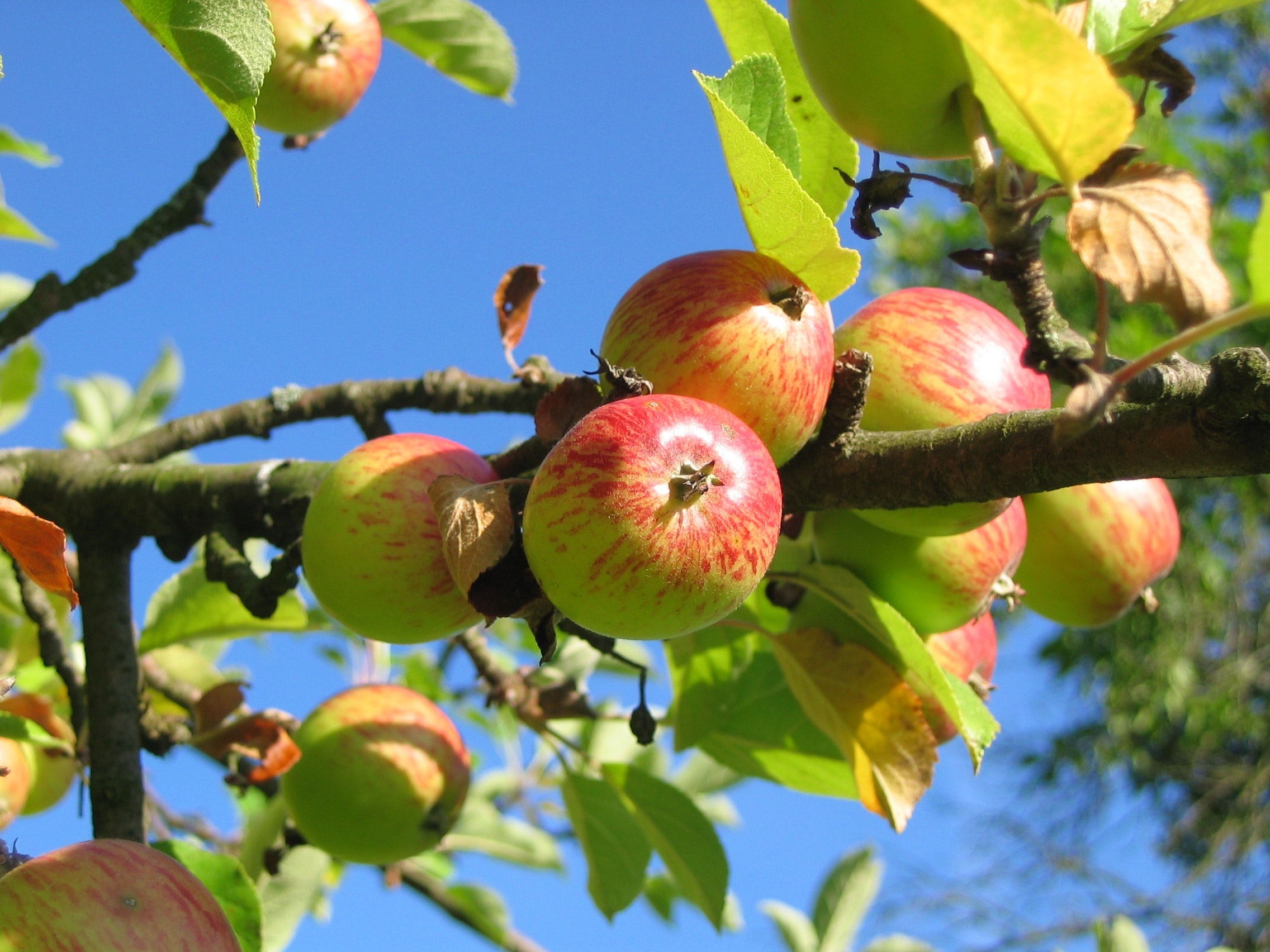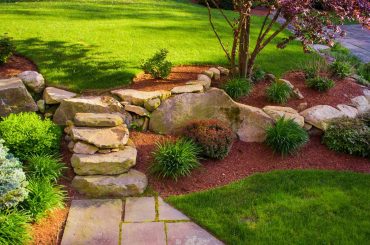Table of Contents
Do you dream of having your own fruit trees but don’t have enough space in your garden? The good news is that you can still enjoy fresh, homegrown fruit, even in small spaces, by growing columnar or cordon apple trees. These unique trees are perfect for growing in small gardens, patios or balconies, and containers.
In this article, we’ll take you through everything you need to know about growing cordon fruit trees, from choosing the right variety to planting, pruning, and caring for your tree. With our helpful tips and advice, you can enjoy delicious, juicy fruit straight from your mini orchard in no time!
Cordon fruit trees, also known as columnar fruit trees, are a type of fruit tree that is trained to grow vertically, with their branches pruned into a single, straight column. This unique shape makes them perfect for small spaces, as they take up very little room and can be grown in a narrow strip along a wall or fence. But while they may be smaller than traditional fruit trees, cordon fruit trees still require careful attention and maintenance to ensure they produce a bountiful crop.
What Are Cordon Fruit Trees?
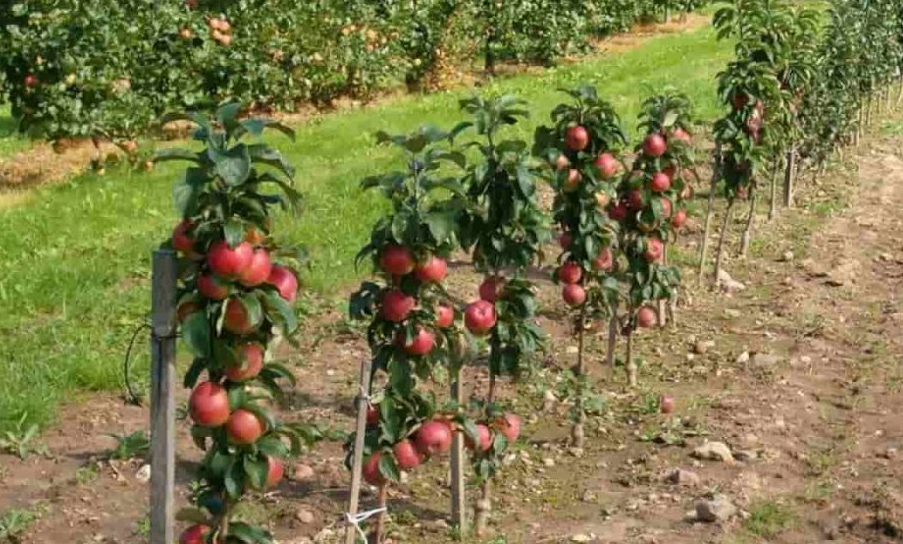
Columnar fruit trees are a type of fruit tree that can also be referred to as colonnade, cordon, or urban fruit trees. They differ from regular fruit trees as they grow upright and do not have long lateral branches spreading outwards. These trees require less soil than traditional fruit trees and are narrow, with a mature height of 6 to 10 feet and a width of 2 to 3 feet, making them ideal for planting in small gardens. They are typically grafted onto medium or dwarfing rootstocks when first grown to enhance their lifespan and improve their stability.
This means that when purchasing these trees, you will be receiving saplings rather than seeds. Cordon apple trees continue to give fruits for up to 20 years; however, their products may be lesser compared to other fruit trees. They can survive in hardy zones between four to eight, making them well-suited for moderate climates.
Varieties of Corden Apple Trees
1. Supercolumns
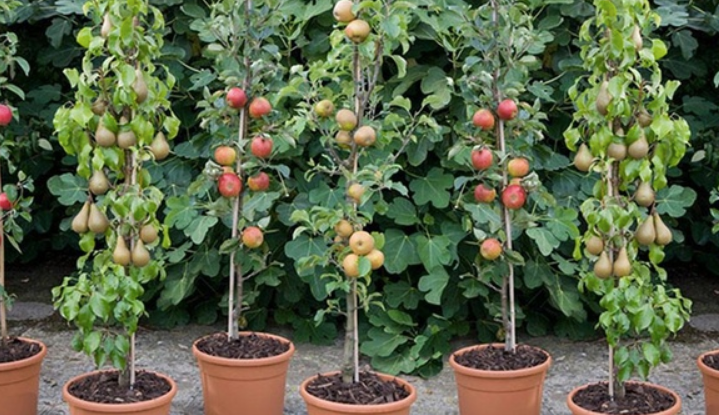
Supercolumn trees are a dream come true for fruit lovers who want to enjoy fresh produce without the hassle of high maintenance. These amazing trees come in a range of varieties, including mouth-watering apples, pears, plums, gages, damsons, and cherries, both modern and traditional. Their slender, upright shape is perfect for gardens or containers, reaching a height of around 7-8 feet (or 2 meters) with a width of just 18 inches.
What’s even better is that they are incredibly easy to care for. A simple annual pruning is all that’s required to keep them in shape. They take up less space as they are transplanted onto small rootstocks. For instance, M27 rootstock for apples, Pixy for Plums, Quince C for Pears, Gage and Damson, and Gisela 5 for the cherries. This means you can enjoy a wealth of fresh, delicious fruit without sacrificing valuable real estate in your garden. Supercolumn trees are self-supporting and generally don’t require any additional support unless they’re exposed to strong winds. The best part is that they’re designed to let sunlight penetrate all around the tree, producing brighter and sweeter fruit.
2. Minarette Fruit Trees
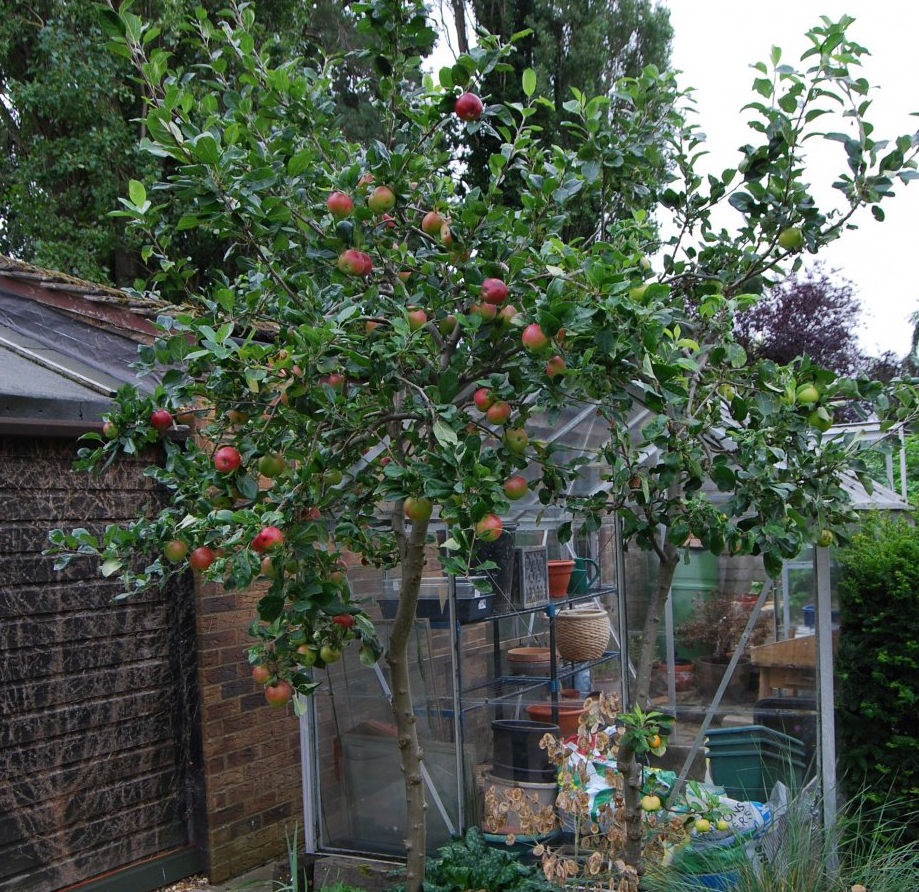
If you’re looking for something similar, you might want to check out the Minarette fruit trees. They share many of the same cultivation and pruning principles as Supercolumn trees. They are normal apple trees that are specifically trimmed in nurseries to achieve a columnar shape. Since most of the apple trees can be pruned into Minarette, they offer a wide range of varieties. As an added bonus, Minarette trees tend to bear fruit fairly quickly after planting, often within the first year. They most commonly come in apple and pear varieties. However, their shape has to be maintained through regular pruning. Otherwise, they can slowly take the original shape of a normal fruit tree. They might even need support to grow better.
3. Ballerina Trees
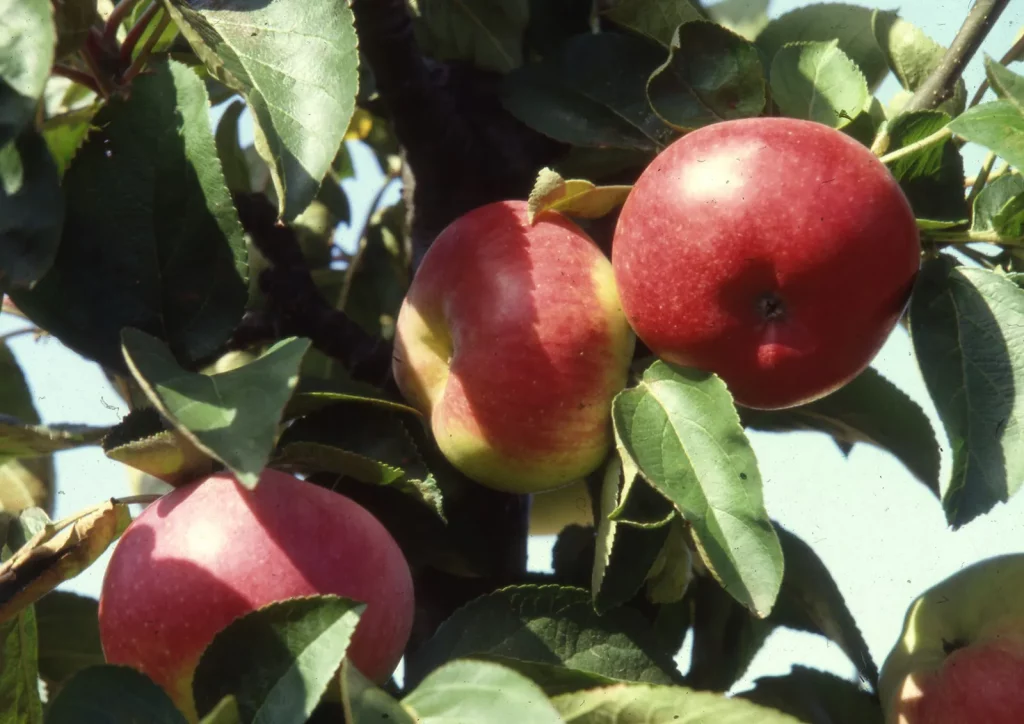
The Ballerina trees are the original columnar-type fruit trees. Unlike Columnar and Minarette trees, it is not trained to take a certain shape. They are naturally occurring columnar fruit trees with the tightest structure. They grow in a single verticle stem with short or zero side branches. They are easier to maintain because of their natural form. Their main attribute is that they require no pruning at all. But they do have some drawbacks. These trees tend to be quite tall and ungainly and are only suitable for larger containersor open ground. Additionally, they are limited modern-bred apple varieties that are specific to the Ballerina type.
4. Pillar Fruit Trees
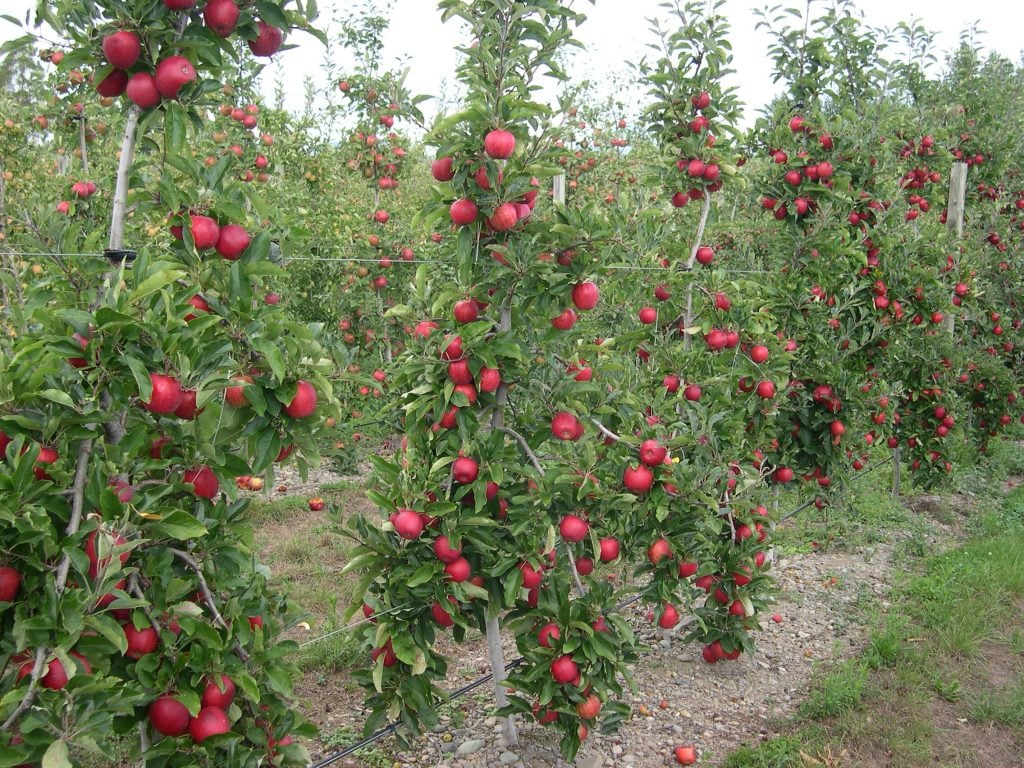
This term simply refers to any fruit tree that has been trained to grow in a columnar shape and can apply to any of the above types. Pillar fruit trees are perfect for gardeners having limited space or the ones who want to grow fruits in containers on patios, balconies, or small gardens. They offer an elegant option for fruit lovers because of their upright habits and minimal trimming requirements. They can also be used to add a distinctive element to the landscape of your garden. With their unique shape and colourful fruit, they add to the aesthetics of any green space. All these options are equally beneficial for compact and low-maintenance gardening. No matter what you choose, all of them produce delicious fruit in the long term.
How to Plant Cordon Apple Trees?
- Timing: The ideal time to plant your one to three-year-old columnar apple trees is between late winter and early spring.
- Choosing a Site: Choose a location that is bright and open and sheltered from strong winds and frost pockets.
- Soil Requirements: Use fertile soil that doesn’t clog water and drains easily. If you have clay soil, dig a large hole for planting and add soil enhancers.
- Pot-Grown Trees: For limited space, you can plant your columnar apple trees in large pots with compost that drains well.
- Plant Spacing: The narrow, upright growth of columnar apple trees allows for planting in small areas. When planting more than one tree, space them two to three feet apart.
- Staking: Provide support for your newly planted trees with a tree stake and tie. Tree stakes should be around 8 feet tall, with two feet below the ground and the remaining six above.
- Pollination: Choose a suitable pollination partner when planting your favourite apple cultivars to ensure cross-pollination. Compatible tree charts can be found online here.
- Pruning: After planting, cut back any long side shoots to three buds from the main pole stem, leaving the leader and any shorter side shoots unpruned.
Support for Codern Apple Trees
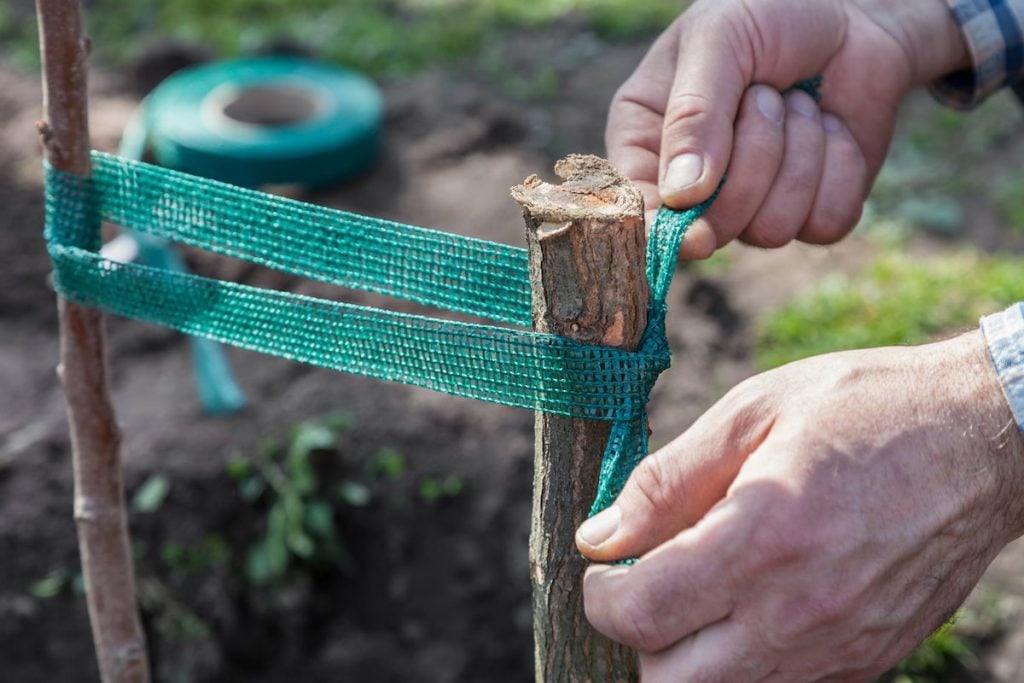
When it comes to supporting your fruit trees, you want to make sure that your structure is sturdy and reliable. Whether you’re training your trees against an existing wall or fence or building a new support structure, it’s crucial to ensure that it can withstand the force of strong winds and support the weight of your trees.
Before you start, examine the existing structure and make any necessary repairs to ensure it’s in good condition using garden repairing tools. Then, add support wires that are firmly anchored in place. It is essential to use good quality and durable fencing wire and fixings, as fruit trees have a long lifespan, usually up to 30 or 40 years.
The fruit trees will use the support of this structure throughout their life, so it’s worth investing the time to create a well-built structure. These initial efforts to make the structure strong and dependable will help your trees thrive better without constant attention.
Caring for Your Columnar Apple Tree
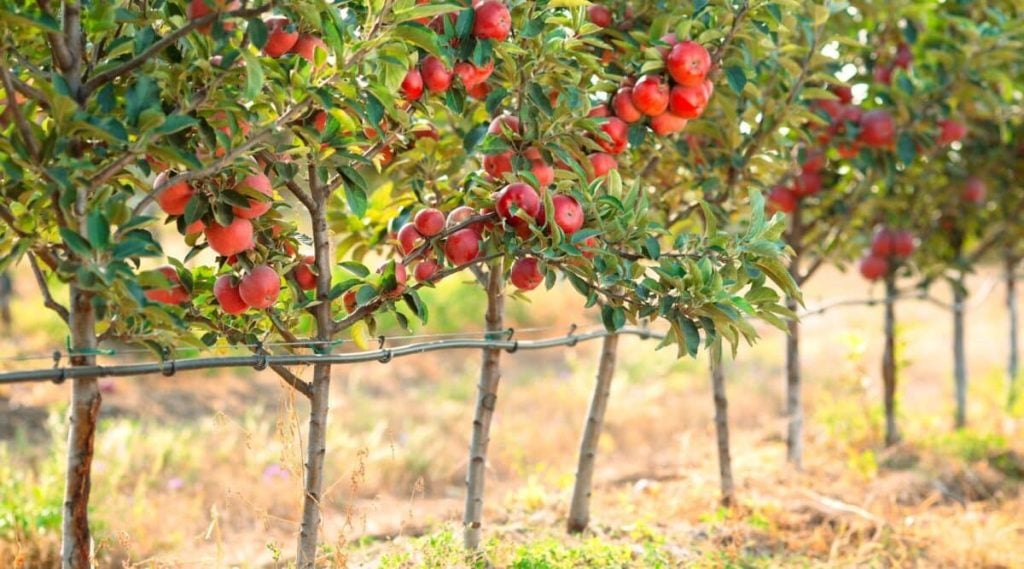
The experience of taking care of your columnar apple tree can give you immense pleasure. It is just important to make sure that the tree gets plenty of sunlight and water and the right environment to grow in. However, since columnar apple trees are generally low-maintenance and easy to care for, there is nothing to worry about. Besides watering and fertilizing the plant regularly, you will have to keep checking for any signs of pests or diseases which can be harmful.
Regularly inspecting your tree and treating any problems early on can help ensure that your columnar apple tree stays healthy and productive for years to come. With a little bit of attention and care, you’ll be enjoying delicious homegrown apples before you know it!
When Can You Expect Your Fruits?
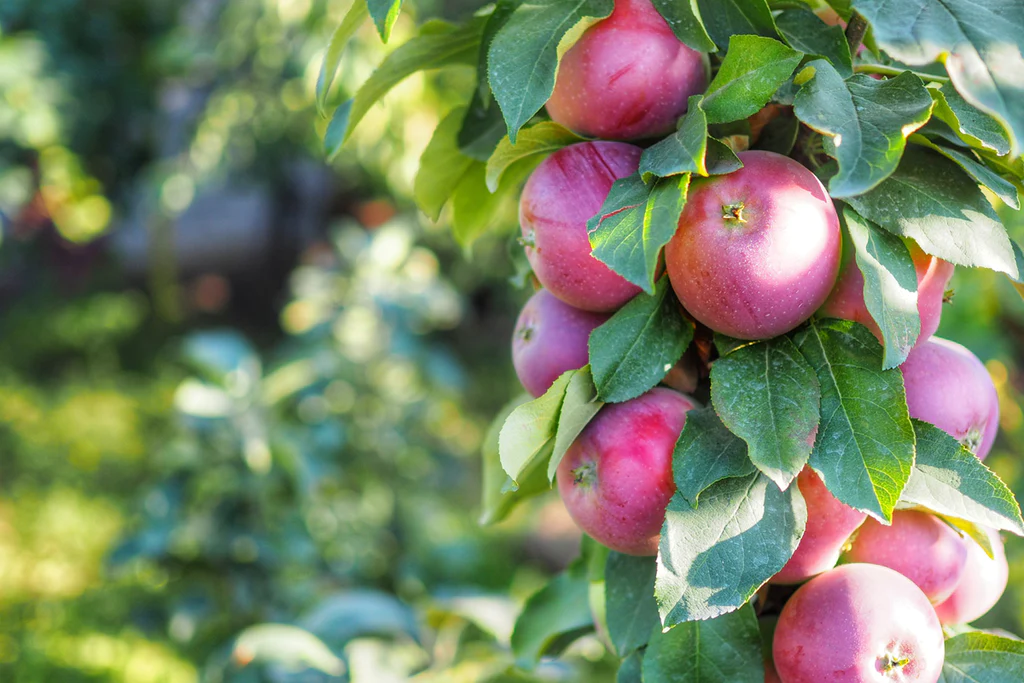
It is very necessary to be patient when it comes to gardening and taking care of plants. Initially, Cordon apple treesmay not produce a lot of fruits. So you will need to be calm. These trees may be smaller in size than traditional apple trees. But they produce a significant amount of fruits in a cluster. Plus, planting different varieties nearby for cross-pollination means you’ll have a variety of apples to choose from each season.
For those looking to maximize their harvest, there are plenty of tips and tricks out there. With the right amount of sunlight and care, your columnar apple tree can start producing fruit in as little as three years. Just remember, the amount of fruit you get will depend on your climate and how well you take care of your tree. But as long as you have two other compatible apple trees nearby, you’ll be enjoying your own juicy apples in no time! Apple season typically runs from late summer through fall, and while some varieties may be ready to harvest earlier, it’s best to wait until the stem detaches easily from the tree before picking.
Are Cordon Apple Trees the Right Choice for You?
The suitability of cordon apple trees for your garden depends on several factors, such as available space, personal preferences, and objectives. If you have limited space or you want to grow fruit on your balcony, columnar apple trees are a perfect fit. These trees provide impressive yields, require minimal maintenance, and their vertical shape can add aesthetic appeal to your landscape.
On the other hand, if you desire a wider variety of apple types or want to experiment with more intricate pruning methods, traditional apple trees may be more suitable for you. However, regardless of the type of apple tree you choose, remember that growing fruit trees can be a satisfying and fulfilling experience. With a little patience and dedication, you can relish fresh, mouth-watering fruit from your garden for many years.
Is Planting Cordon Trees Adding Aesthetics to Your Garden?
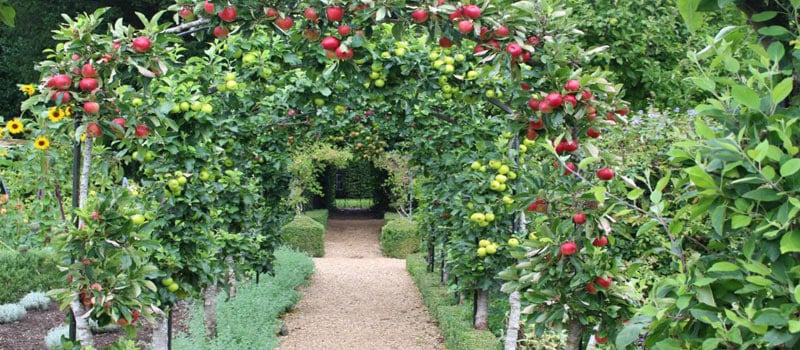
If you want to give an aesthetically pleasing touch to your garden, Cordon fruit trees can be a great option. Besides, with cordon trees, you can practically get huge harvests even in small, confined garden spaces. With their unique verticle growth, they can surely impress any visitor. They can also be utilized to fill walls, fences, or borders. This is why they are becoming popular for plantations in small urban spaces.
Cardon trees create a neat and tidy look with uniform growth. They add elegance and sophistication by giving structure and symmetry to your garden layout. They look even more sleek when planted in a row. Moreover, Cordon trees can also be trained to take different shapes. They are transformed into the shape of fans, espaliers, or arches, further adding to their aesthetic appeal. This technique is particularly used by professional gardeners to add a backdrop to a seating area or to create a centrepiece for a garden.
Beautify Your Garden With Cordon Fruit Trees
Cordon fruit trees can add a lot of beauty to your garden. Growing them can give you a chance to try out something new with limited space. They can also help you to utilize the vertical space of your landscape. With cordon trees, it has become possible for home gardeners to yield a wide variety of fruits with low maintenance for a long period of time.
Besides apples, you can also produce pears, cherries, and other fruits in a similar way. Just remember to do your research beforehand. Follow the specific planting instructions for whatever variety you choose. It is always necessary to be patient and consistent in your efforts. With a few years gone, cordon trees can mature to produce a significant amount of fruit. At that time, you’ll be rewarded with a fruitful garden that you will be proud of.
Let me know your plans to add aesthetics to your garden in the comment box!

